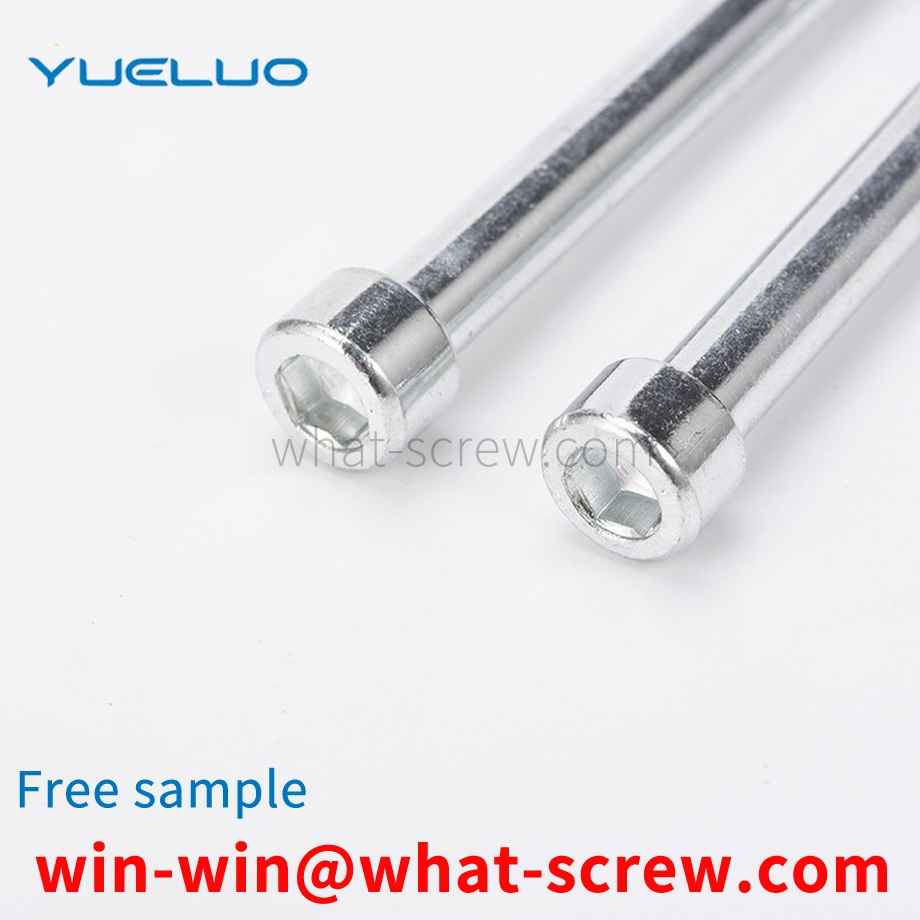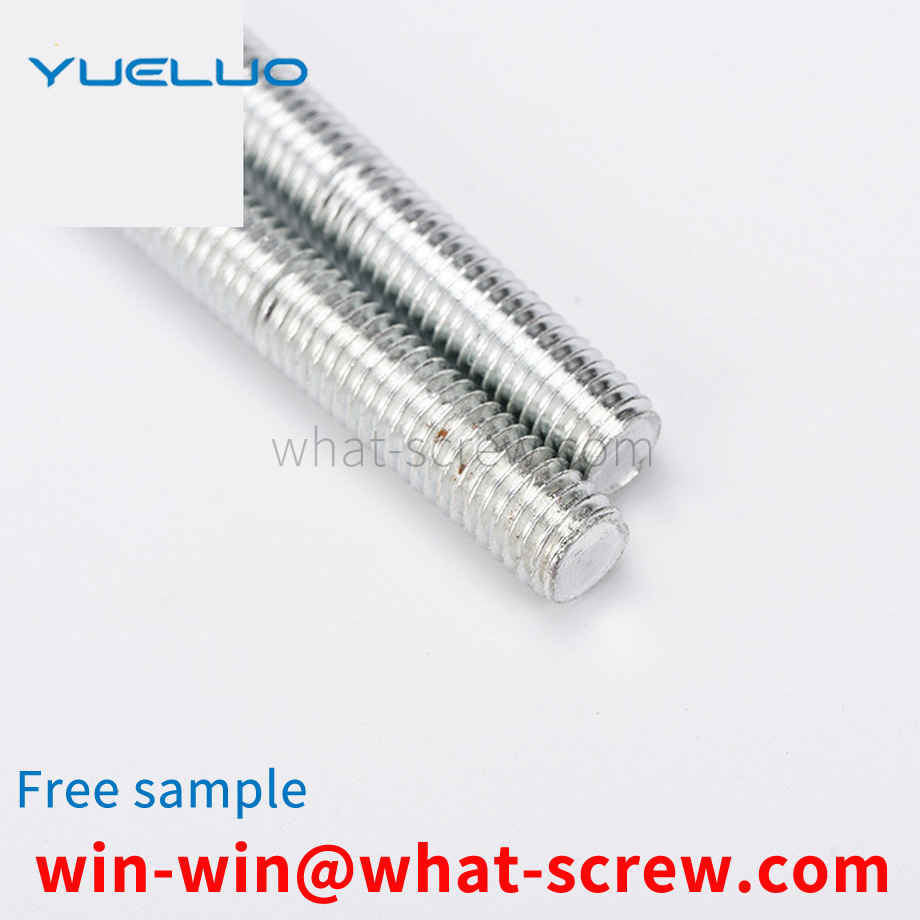The pretreatment process is a key process that determines the quality of nickel-phosphorus plating on high-strength bolts. The purpose of this process is to remove the passivation layer on the surface of the bolt and prevent the regeneration of the passivation film. The execution of this process directly determines the degree of bonding between the substrate and the coating. Most of the quality accidents in production are caused by poor pretreatment of bolts. Before plating, the oil, rust and oxide scale attached to the surface of the bolt must be carefully removed; the difference with electroplating is that it should be inspected more carefully, and plating is absolutely not allowed on unclean bolts. ① Inspection of bolts: Visual inspection of the surface quality of bolts requires that any burrs left by processing must be removed, and sharp edges and corners must be rounded. ② Manual degreasing; ensure that the surface of the substrate is free of oil stains. ③ Soak and remove oil; boil the bolts in alkaline water to remove the surface oil. ④ Pickling: In order to prevent the alkaline degreasing solution from contaminating the flash nickel plating tank, electro-activation treatment is carried out with pickling solution before flash nickel plating. ⑤ Electro-activation; electro-activation treatment with acid solution. ⑥ Flash nickel plating; flash nickel plating should be used for low alloy steel to increase the bonding strength between the coating and the substrate.
Standard introduction Standard code name Material coating GB/T65-2000 slotted cylindrical head screw steel, stainless steel galvanized passivated or untreated GB/T67-2000 slotted pan head screw steel, stainless steel galvanized passivated or not Treated GB/T68-2000 slotted countersunk head screw steel, stainless steel galvanized passivated or untreated GB/T70.1-2008 hexagon socket head screw steel, stainless steel galvanized passivated or untreated GB/T70 .2-2008 Hexagon socket head screw steel, stainless steel galvanized passivated or untreated GB/T70.3-2000 Hexagon socket head countersunk head screw steel, stainless steel galvanized passivated or untreated GB/T71-1985 Open Slotted taper end set screw steel, stainless steel galvanized passivated or untreated GB/T73-1985 slotted flat end set screw steel, stainless steel galvanized passivated or untreated GB/T74-1985 slotted concave end set screw Screw steel, stainless steel galvanized passivated or untreated GB/T75-1985 slotted long cylindrical end set screw steel, stainless steel galvanized passivated or untreated GB/T77-2000 hexagon socket flat end set screw steel, stainless steel Galvanized passivated or untreated GB/T78-2007 Hexagon socket set screw steel, stainless steel galvanized passivated or untreated GB/T79- 2000 Hexagon socket set screw steel, stainless steel galvanized passivated Or untreated GB/T80-2007 Hexagon socket set screw steel, stainless steel galvanized passivated or untreated GB/T818-2000 Cross recessed pan head screw steel, stainless steel galvanized passivated or untreated GB/ T819.1- 2000 Cross recessed countersunk head screw steel 4.8 grade steel galvanized passivation GB/T819.2- 1997 Cross recessed countersunk head screw steel, stainless steel A2-70, non-ferrous metal CU2 or CU3 steel, stainless steel or non-ferrous metal plated Zinc passivated or untreated GB/T820- 2000 Cross recessed half countersunk head screw steel, stainless steel galvanized passivated or untreated GB/T822- 2000 Cross recessed cylinder head screw steel, stainless steel galvanized passivated or untreated Treated GB/T823-1988 cross recessed small pan head screw steel, stainless steel galvanized passivated or untreated GB/T833-1988 slotted large cylindrical head screw steel, stainless steel galvanized passivated or untreated GB/ T837- 1988 Slotted pan head non-prolapse screw steel, stainless steel galvanized passivated or untreated GB/T838- 1988 Hexagon head non-prolapse screw steel, stainless steel galvanized passivated or untreated GB/T2671.1- 2004 Hexagon socket head low cylindrical head screw GB/T2671.2-2004 Hexagon socket head screw GB/T2672-2004 Hexagon socket head pan head screw steel galvanized passivation GB/T2673-1986 Hexagon socket countersunk head screw steel plated Zinc passivation GB/T13806.1-1992 Fasteners for precision machinery ten Slotted Screws Steel, Copper: H68 or HP59-1 Zinc Passivated or Untreated
At the beginning of the quality inspection process broadcast, we ordered the cross recessed screw and screw wire material into our production screw industry. For manufacturers in the screw industry, we must first detect the wire diameter of the screw wire and the material of the screw. Generally, the wire diameter of the screw is measured by a caliper and a measuring wire. Diameter size, whether it is the same as the size ordered by yourself. After testing these, it is the testing in the production process, starting from the head of the screw, to determine the size of the head, the opposite side of the head, the diagonal angle, the depth of the cross groove, the tolerance range of the screw, and so on. These are checked with calipers. In the inspection of all aspects when rolling teeth, the main thing is whether the thread can pass the pass and stop gauge, and whether the screw thread can pass the gauge and stop. Next is the electroplating measurement problem. After electroplating, whether it meets the requirements of environmental protection and whether it can pass the time required by the salt spray. Tools include environmental testing machines and salt spray testing machines. In short, in the production and sales process of cross recessed screws, there must be necessary tools to detect the quality of screws. The summary should be summarized as follows: calipers, hardness testers, salt spray machines, environmental testing machines, pass and stop gauges, etc. .
Commonly used are R-type rivets, fan rivets, blind rivets (blind rivets), tree rivets, semi-circular head, flat head, semi-hollow rivets, solid rivets, countersunk head rivets, blind rivets, hollow rivets, these are usually used Self-deformation connection is riveted. Generally less than 8 mm with cold riveting, larger than this size with hot riveting. But there are exceptions. For example, the nameplate on some locks is riveted by the interference between the rivet and the lock body hole.
Guangdong Yueluo Hardware Industry Co., Ltd. discloses an eccentric special-shaped rivet, which has a simple structure and is inexpensive to manufacture. The eccentric shaped rivet includes a cylindrical head and an eccentric polished rod. The diameter of the cylindrical head is larger than that of the eccentric polished rod. The eccentric polished rod is arranged at the lower end of the cylindrical head, and the axis of the eccentric polished rod is not the same as the axis of the cylindrical head. on the same straight line. The eccentric special-shaped rivet has low manufacturing cost and is easy to realize automatic assembly.
We have many years of experience in the production and sales of screws, nuts, flat washers, etc. The main products are: hexagonal nuts with fine teeth, GB70 stainless steel screws, 4.8 grade galvanized nuts, JISB1182 square head bolts and other products, we can provide you with suitable products Your fastener solution.



















 Service Hotline
Service Hotline




